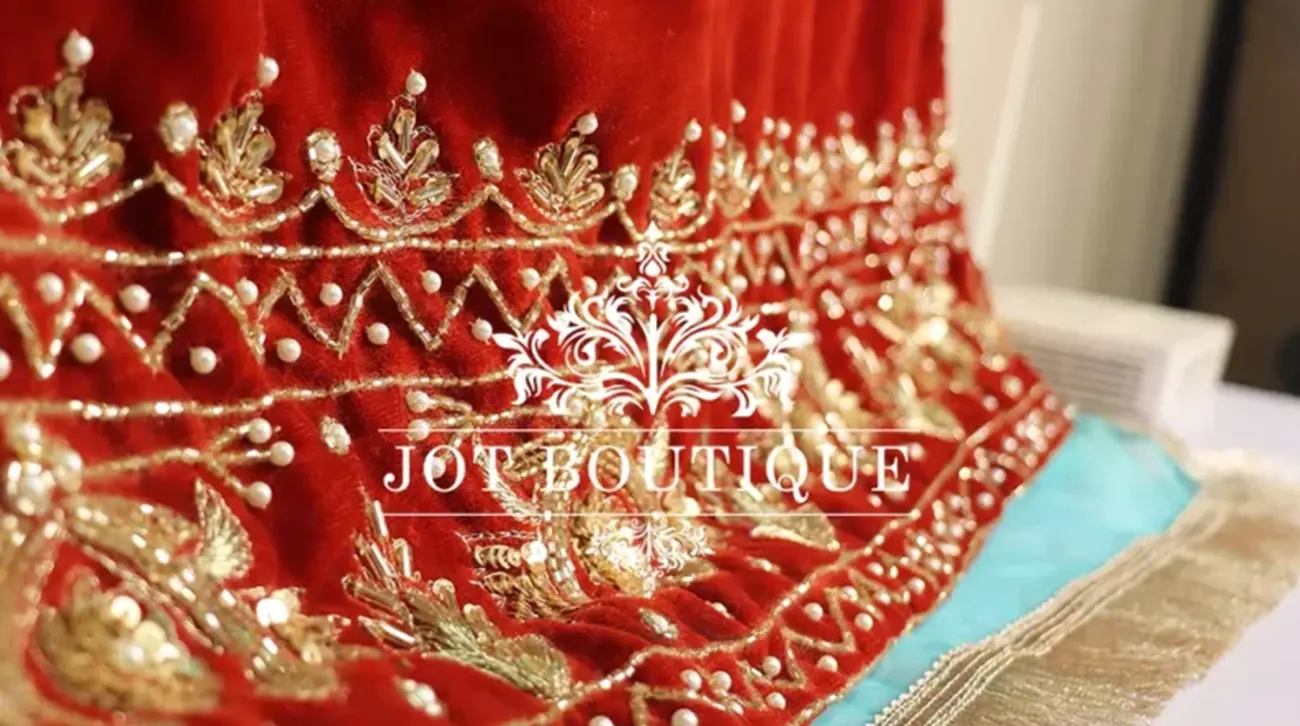Punjabi and Pakistani suits are renowned for their intricate and diverse embroidery work, reflecting rich cultural heritage and artisanal craftsmanship. Here are some popular types of embroidery work found on these suits:
Punjabi Suits
1.Phulkari:
– Origin: Punjab
– Description: Features floral patterns embroidered with silk threads on coarse cotton fabric. Traditionally, Phulkari work is done on dupattas and shawls.
– Styles: Bagh (heavily embroidered), Chope (light embroidery on borders), and Thirma (white base fabric).
2. Tilla Work:
– Origin: Punjab
– Description: Metallic threads, often gold or silver, are used to create elaborate designs. Commonly seen on wedding and festive attire.
– Styles: Can range from simple motifs to heavy and intricate patterns.
3. Gota Patti:
– Origin: Punjab and Rajasthan
– Description: Ribbon or lace appliqué work that involves sewing small pieces of gold or silver ribbon onto the fabric.
– Styles: Used to embellish the edges of the suits, dupattas, and sometimes the entire garment.
4. Zari/Zardozi:
– Origin: Persia, popular in Punjab
– Description: Involves metal embroidery, typically using gold or silver threads. It’s often combined with beads, pearls, and sequins.
– Styles: Heavy and luxurious, ideal for bridal and formal wear.
Pakistani Suits
1. Chikankari:
– Origin: Lucknow, popular in Pakistan
– Description: White-on-white embroidery done with fine needlework to create delicate patterns. It’s done on lightweight fabrics like muslin, chiffon, and georgette.
– Styles: Shadow work, flat stitch, and Jali work (net patterns).
2. Kamdani:
– Origin: Pakistan
– Description: Similar to Zardozi but more delicate. Uses fine wires and threads of gold and silver to create shimmering patterns.
– Styles: Often used in formal and bridal wear.
3. Aari:
– Origin: Mughal era, popular in Pakistan
– Description: Intricate chain stitch embroidery using a hooked needle. It’s done on a stretched fabric, creating detailed floral and paisley designs.
– Styles: Often combined with sequins and beads.
4. Mirror Work:
– Origin: Gujarat and Rajasthan, popular in Pakistan
– Description: Small pieces of mirror are affixed onto the fabric, creating a reflective and sparkling effect.
– Styles: Commonly used in festive and casual wear, often combined with colorful threads.
5. Kundan:
– Origin: India, popular in Pakistan
– Description: Embroidery that involves setting gemstones and crystals into the fabric, giving a rich and opulent look.
– Styles: Common in bridal and ceremonial outfits.
Common Elements in Both Punjabi and Pakistani Suits
1. Sequins and Beads:
– Added for extra sparkle and texture, often used in conjunction with other embroidery techniques.
2. Appliqué Work:
– Pieces of fabric are sewn onto the main fabric to create designs, often combined with embroidery.
3. Resham Work:
– Use of silk threads to create vibrant and intricate designs. It’s versatile and can be used on various fabrics and suit styles.
These embroidery techniques are an integral part of the aesthetic and cultural identity of Punjabi and Pakistani suits, making them popular choices for a wide range of occasions from everyday wear to weddings and festivals.




